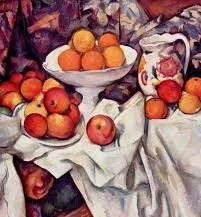Stimulant Treatments
selected research articles
Psychosocial treatments for uncomplicated addiction problems are generally not substance specific. The best psychosocial interventions build in new learning to support lifestyle change. Stimulant drugs are often recreational and their use is self-limiting because nobody wants to be constantly on a high. Nonetheless it seems some form of intensive psychosocial intervention works best. Contingency management (CM) works only for as long as it is applied and so it makes good sense to combine CM with community reinforcement approach CRA. In the UK, Social Behaviour and Network Therapy (SBNT) would replace CRA.
Meta-analysis :: How good are psychosocial interventions?
De Crescenzo F, Ciabattini M, D’Alò GL, De Giorgi R, Del Giovane C, Cassar C, et al. (2018) Comparative efficacy and acceptability of psychosocial interventions for individuals with cocaine and amphetamine addiction: A systematic review and network meta-analysis. PLoS Med 15: e1002715
This study reviewed psychosocial interventions: contingency management (CM), cognitive behaviour therapy (CBT), community reinforcement approach (CRA), 12-steps, meditation and supportive psychodynamic therapies. The most effective treatment on the basis of long term abstinence and lowest drop-out rates was a combination of CRA+CM. CM alone was effective in the short term; CBT was also effective but more variable. 12-step programmes had high drop-out rates and hence poor long term benefits.
The chart show the effectiveness of the interventions expressed in terms of how likely they are to be better than the usual treatment (typically unstructured sessions)…
Pharmacotherapies
There is no gold standard pharmacotherapies for stimulant drugs
Studies to date are inadequate for estimating effect sizes of pharmacotherapies. There needs to be definitive trials of the most promising medications so that there can be a consensus on what should be put into clinical guidelines. That said, there are medications with evidence of effectiveness.
Reviews :: How good are stimulant pharmacotherapies?
Promising pharmacological approaches have emerged for the treatment of stimulant dependence. For the initial withdrawal phase, locally agreed symptomatic treatment is suggested coupled with one of these longer term options:
➊ Atypical stimulants
Have effects on multiple neuro-transmitter systems, notably boosting dopamine, but are less potent than cocaine or amphetamine.
eg modafinil
➋ Anticonvulsant like
Any drug that both lowers stimulation (glutamate function) and raises depression (GABA function) of the nervous system.
eg topiramate, baclofen, acamprosate
➌ Dopamine enhancers
Stimulant drugs cause a flood of dopamine (among other lesser effects). Enhancing dopamine reduces craving.
eg disulfiram, bupropion
➍ Substitutes
Directly substituting a stimulant, preferably of low potency, is common for nicotine but rare for cocaine or amphetamine
eg dextro-amphetamine, methylphenidate
Karila L, Reynaud M, Aubin H-J, Rolland B, Guardia D, Cottencin O and Benyamina A (2011) Pharmacological Treatments for Cocaine Dependence: Is There Something New? Current Pharmaceutical Design 17: 1359-1368 doi.org/10.2174/138161211796150873
Chan B, Freeman M, Kondo K, Ayers C, Montgomery J, Paynter R & Kansagara D (2019) Pharmacotherapy for methamphetamine/amphetamine use disorder—a systematic review and meta-analysis Addiction 114: 2122-2136 doi:10.1111/add.14755
Comment As a class of medication, antipsychotics, which theoretically might be effective by blocking the dopamine rush caused by stimulants, have proved to be ineffective. Antidepressants have also been found to be ineffective save for the treatment of moderate depression if this persists after withdrawal. There are interesting possibilities of new drugs which can destroy cocaine as if it were a virus - this is for the future.
addiction outcomes…








